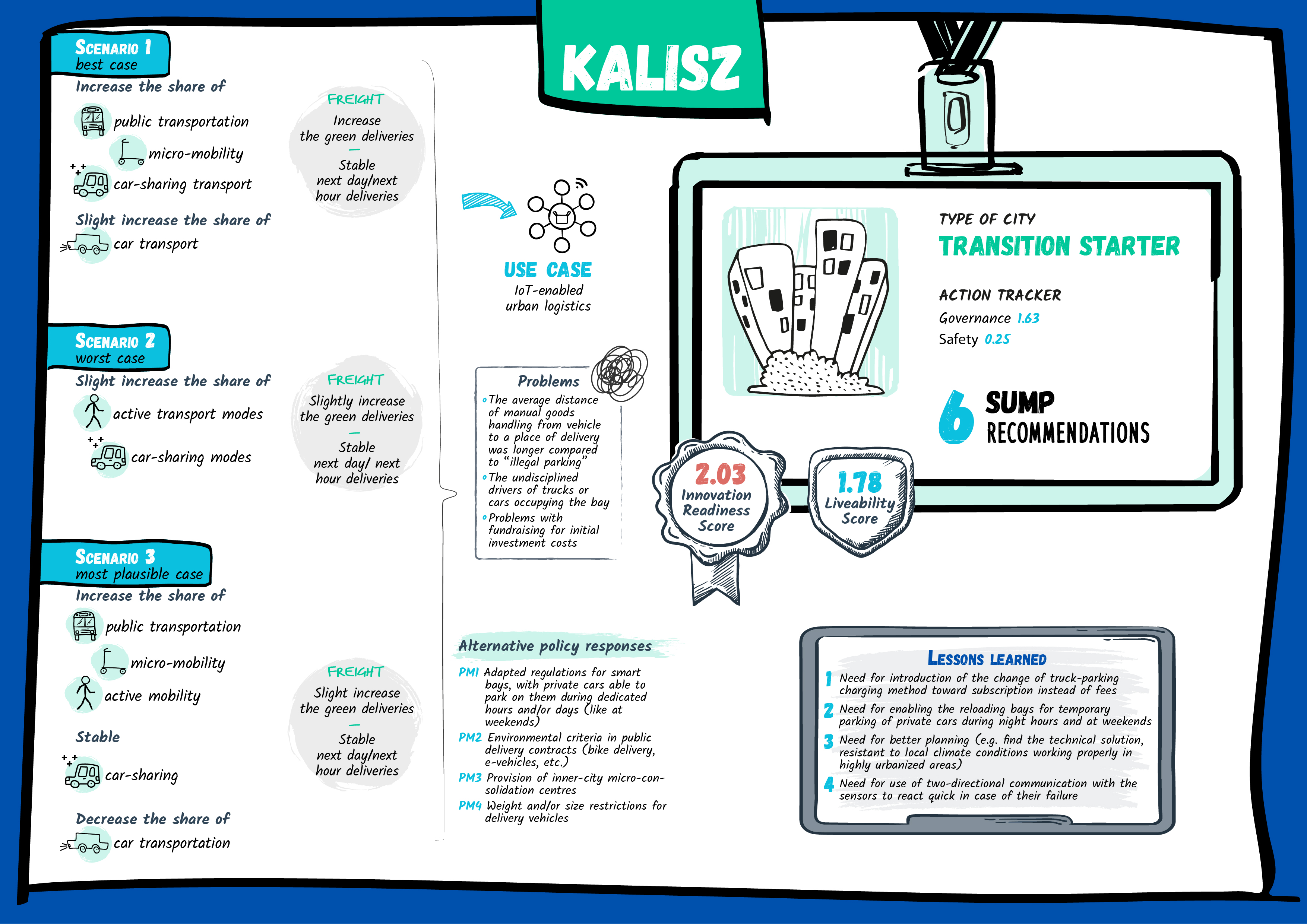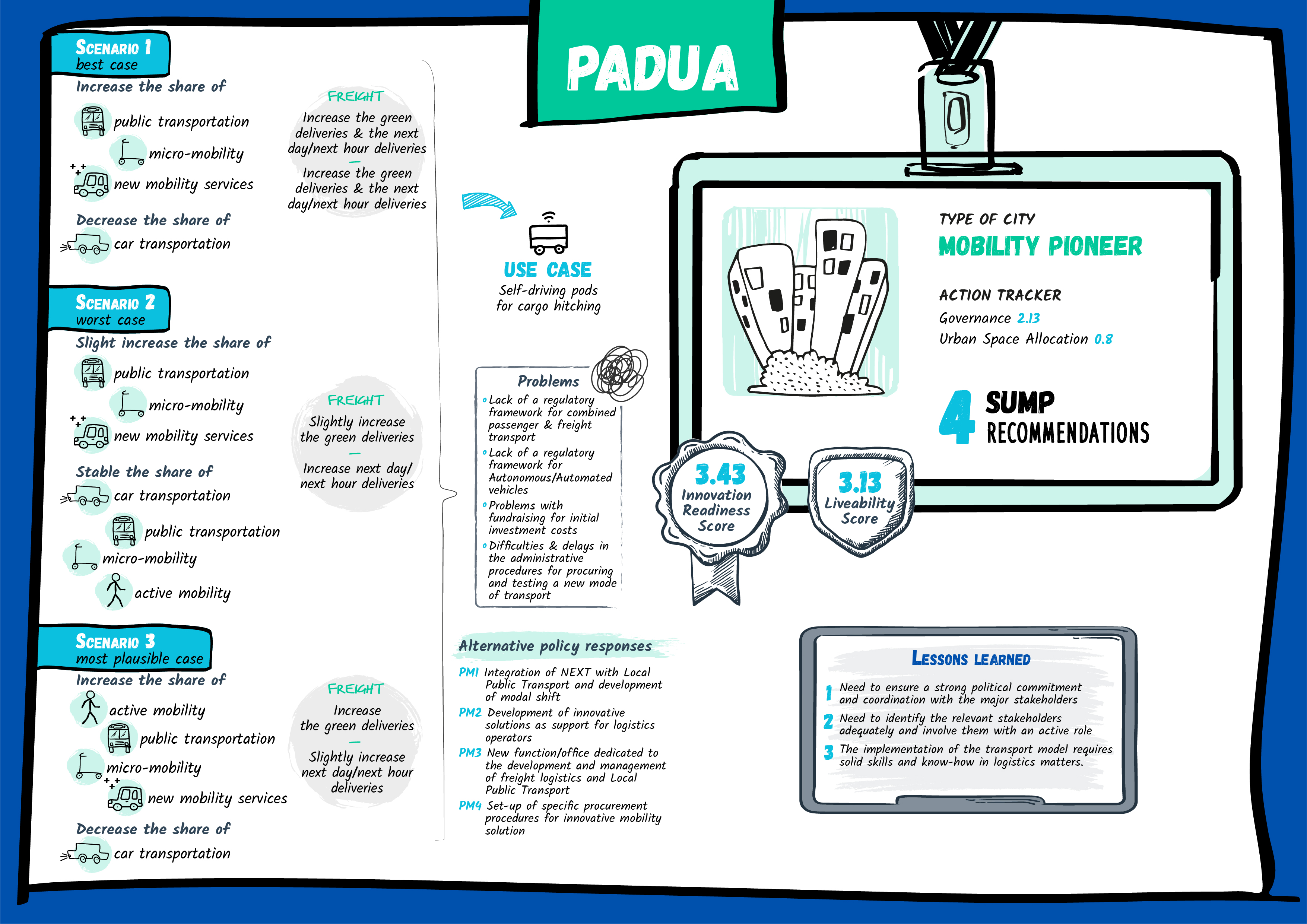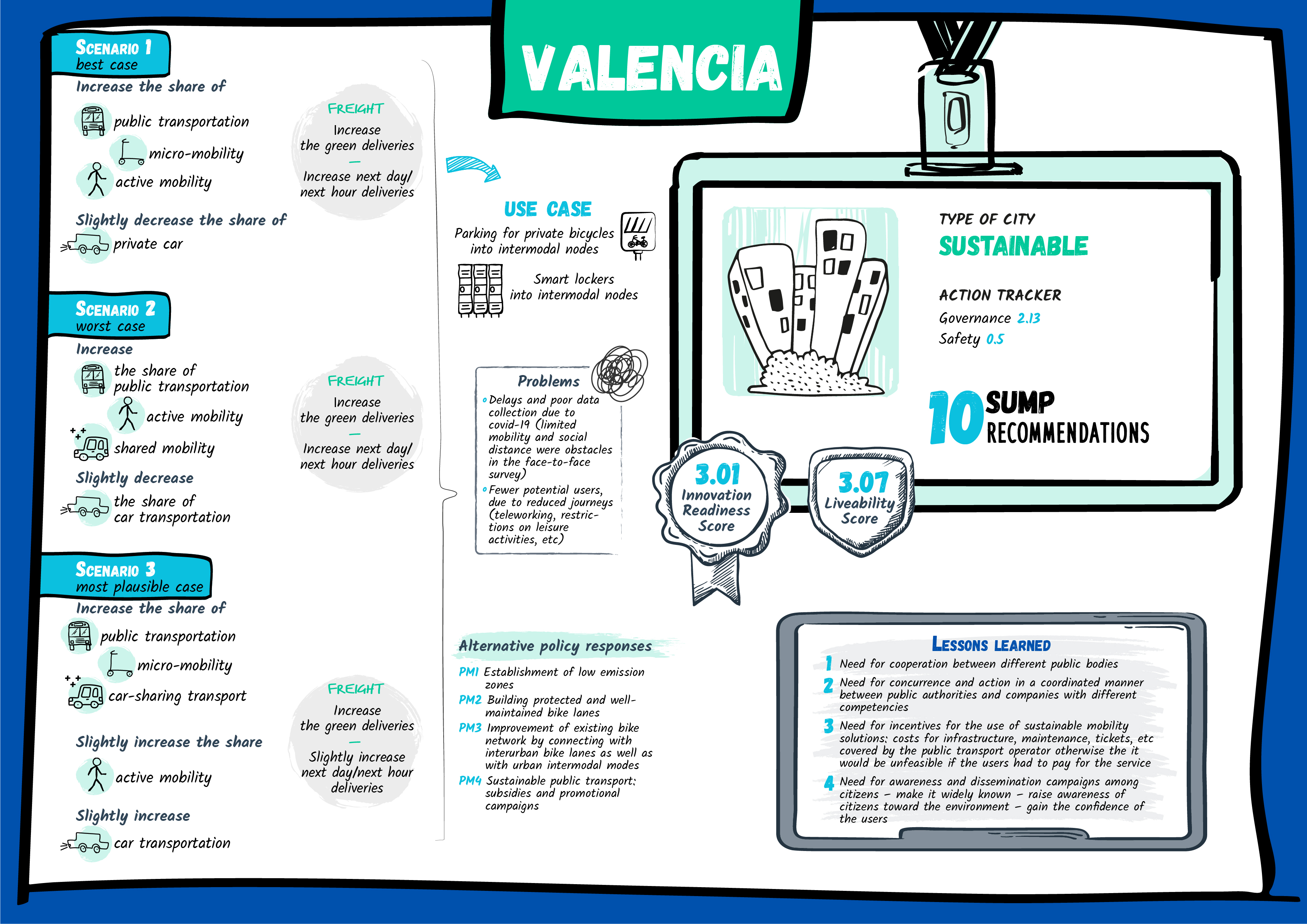City profiles
The case of Kalisz
Kalisz, a city in Poland, has implemented a digital solution to improve the management of loading and unloading operations in the city center. The solution involved the use of Internet of Things (IoT) technology to create a sensor network, allowing for real-time access to transport data and dynamic management of unloading activities. The system was aimed at urban freight transport drivers, who could book reloading bays using a mobile app. However, during the pilot implementation, the city encountered problems such as low occupancy rates and undisciplined drivers blocking parking bays. The lessons learned from the pilot included the need for changing the parking charging method and the introduction of regulatory frameworks for better space utilization. To improve the situation, the city proposed alternative policy responses such as adapted regulations for smart bays, environmental criteria in public delivery contracts, provision of micro-consolidation centers, and weight and/or size restrictions for delivery vehicles. The city's current situation was assessed using the SPROUT tools, revealing weaknesses in Innovation Readiness and strengths in Climate and City Typology and Sustainability. The city's higher value was observed for Governance, while its lower value was observed for Safety. The city-led proposed modifications for the SUMP/SULP cycle were focused on providing financial incentives and regulatory frameworks to increase parking bay occupancy rates.

The case of Padua
The city of Padua aims to optimize urban transportation by integrating passenger and freight transport through innovative e-mobility solutions. The SPROUT pilot project tested the "NEXT system," self-driving modular pods that can merge according to estimated flows in real-time, reducing traffic, travel time, and emissions. The project encountered challenges related to regulatory frameworks, skilled workforce, and stakeholder engagement. Padua's profile was assessed using the SPROUT tools, and the city was categorized as a "Mobility Pioneer." The proposed policy responses include integration with local public transport, innovative logistics solutions, and dedicated management offices. The city-led proposed modifications to the SUMP/SULP focus on better planning and managing the execution of the city's sustainable mobility plan.

The case of Valencia
Valencia is leading the way in sustainable urban mobility with its innovative pilot program aimed at encouraging more environmentally friendly modes of transport. The program includes secure bike parking at metro stations and smart lockers for last-mile freight and passenger transportation. However, challenges arose during implementation, highlighting the need for better cooperation between public bodies and companies, incentives for sustainable mobility, and awareness campaigns for citizens. The city proposes modifications to its SUMP/SULP and Metropolitan Mobility Plan, including the establishment of low-emission zones and improved bike lanes, to enhance sustainability and liveability. Valencia is paving the way for a greener, more sustainable future in urban mobility.

The case of Budapest
Budapest's pilot program promotes shared mobility solutions in city center districts 6 and 7, with the aim of increasing modal share of shared mobility, reducing traffic congestion, and improving public space. Use case 1 restricts car traffic in a pedestrian zone, while use case 2 creates 86 micro-mobility points to respond to the unregulated appearance of micro-mobility services. Lessons learned include the need for city-specific planning regulations and additional regulations for micro-mobility. The city proposed four alternative policy responses, including measures to prioritize public transport and provide leisure activities. SPROUT tools were used to assess the city's innovation readiness and liveability score, and the city was considered "sustainable" in terms of innovative urban mobility. The lack of regulatory framework related to the storage of shared micro-mobility devices was noted as a major problem.

The case of Tel Aviv
In Tel Aviv, a pilot project was carried out to address the challenges posed by the construction of the Light Rail Transit system. Three use cases were demonstrated, including identifying passenger mobility patterns, reallocating the public sphere to balance capacity and liveability, and prioritizing vulnerable road users at signalized intersections. Lessons learned from the pilot project included the need for appropriate business models for data acquisition, a GIS data layer of the network, integrating local knowledge of traffic experts, and advanced data analysis capabilities. The city proposed four alternative policy responses, including supporting cooperation with data providers from the private sector, providing clear measures for traffic data quality, setting agreements for data, and defining data collection devices' maintenance policy. The city's current situation was assessed using the SPROUT tools, and modifications to the SUMP/SULP were proposed to address regulatory barriers and safety perceptions limiting the integration of innovative mobility solutions.
